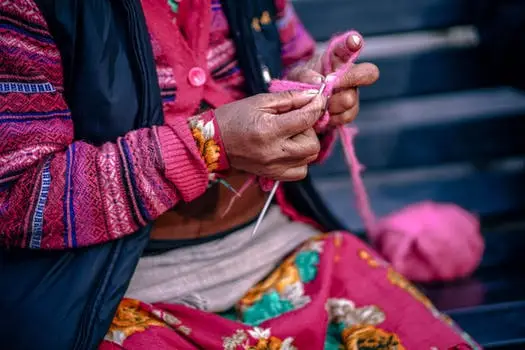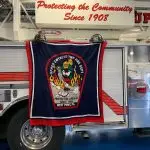Knitting: A Quiet Cultural Legacy Beyond Stereotypes
When knitting comes to mind most of us envision an older generation. Your grandmother, perhaps, sitting on a porch somewhere in a circle with her friends. Needles in hand, gossip passing between them, producing knit scarves and socks; perfecting the art form. History, however, has shown us that knitting, at least here in the USA, is so much more than that. Whether it be a custom blanket, a labor of love for a dear friend meant to welcome a new baby or a bright pink hat meant to empower a movement with each pearled stitch drenched in women’s liberation, knitting has always played a strong but quiet role in our culture.
The Revolutionary Roots of American Knitting
Originating in Egypt, knitting made its way to the Americas through Mediterranean trade. While knitting may seem like a simple hobby, it was quickly politicized. During the beginning stages of the Revolutionary War, a group called the Daughters of Liberty, began to stage small gatherings, where members were encouraged to grow, dye, and spin their own wool in an effort to protest the taxation of textiles and other goods sold by the British. A women’s liberation movement in its own right, these small actions created an environment where members and their spouses were constantly looking for ways to revolt against an oppressive government.
Wartime Knitting: A Symbol of Support and Solidarity
As the years went on, knitting continued to be a main stay in popular fashion and household essentials. As with anything, people began to look for a faster way to create knit goods. Several knitting looms and frames were made. However it was not until much later that machine knit products were comparable in quality to hand knit products. Proof of that came during the Civil War, when soldiers wearing machine knitted socks began to experience foot rot. In an effort to show support to the troops, women across the country began hand knitting quality wool socks and custom blankets to send to the war effort. The tradition of knitting during war time continued during the First and Second World Wars. During World War II, First Lady Eleanor Roosevelt was the founding member of Knit for Defense, a group whose mission was to encourage American women to knit for soldiers fighting overseas. After WWII the craft began to decline. Manufacturers had found a way to produce and sell knit goods cheaper and more quickly than ever before.
The 1970s Revival and Rise of DIY Culture
Thi
In the early 1970’s knitting became extremely popular. This was the result of many things. First, and probably most importantly was fashion. Bright colored knit items were extremely popular in the 70’s. Another factor were big box craft stores that began making their debut everywhere. They were able to offer much lower prices than that of the smaller stores that had previously dominated this area. Hand knitting patterns were now being mass produced, allowing anyone with an interest to learn the craft. The industry stayed stagnant for the next few decades, and was met with a boom during the craft and DIY movements of the early 2000’s. A new craze swept across the nation. Americans became more interested in buying quality items, including organic and home grown foods and resources.
This bled into a new focus on creativity, self-sufficiency, and supporting local businesses. Craft blogs began to pop up all over the web which was important because now in addition to being able to purchase patterns at craft stores, bloggers found a way to make patterns available in PDF form. It was now just as simple as downloading and printing. Websites like Etsy and Pinterest also helped to keep knitting relevant in the digital age, by providing a fresh platform that allows users to gain ideas, perfect their craft, buy and sell in an online marketplace.
Modern-Day Meaning: Knitting as Political Expression
It has essentially been the rebirth of an age old craft in the modern world. As we are often told, it is true that history has a way of repeating itself. In 2017 knitting was once again thrown into the political spotlight. In preparation for the National Women’s March, bright pink hats were knitted and worn as a show of advocacy for women’s rights.
The Enduring Impact of a Timeless Craft
It is profound that something that seems like such a simple technique of textile manufacturing, has been such a large part of so many historic and meaningful times in our history. Knit items will always be a special part of our culture because they embody the past and will comfort us into our future.




